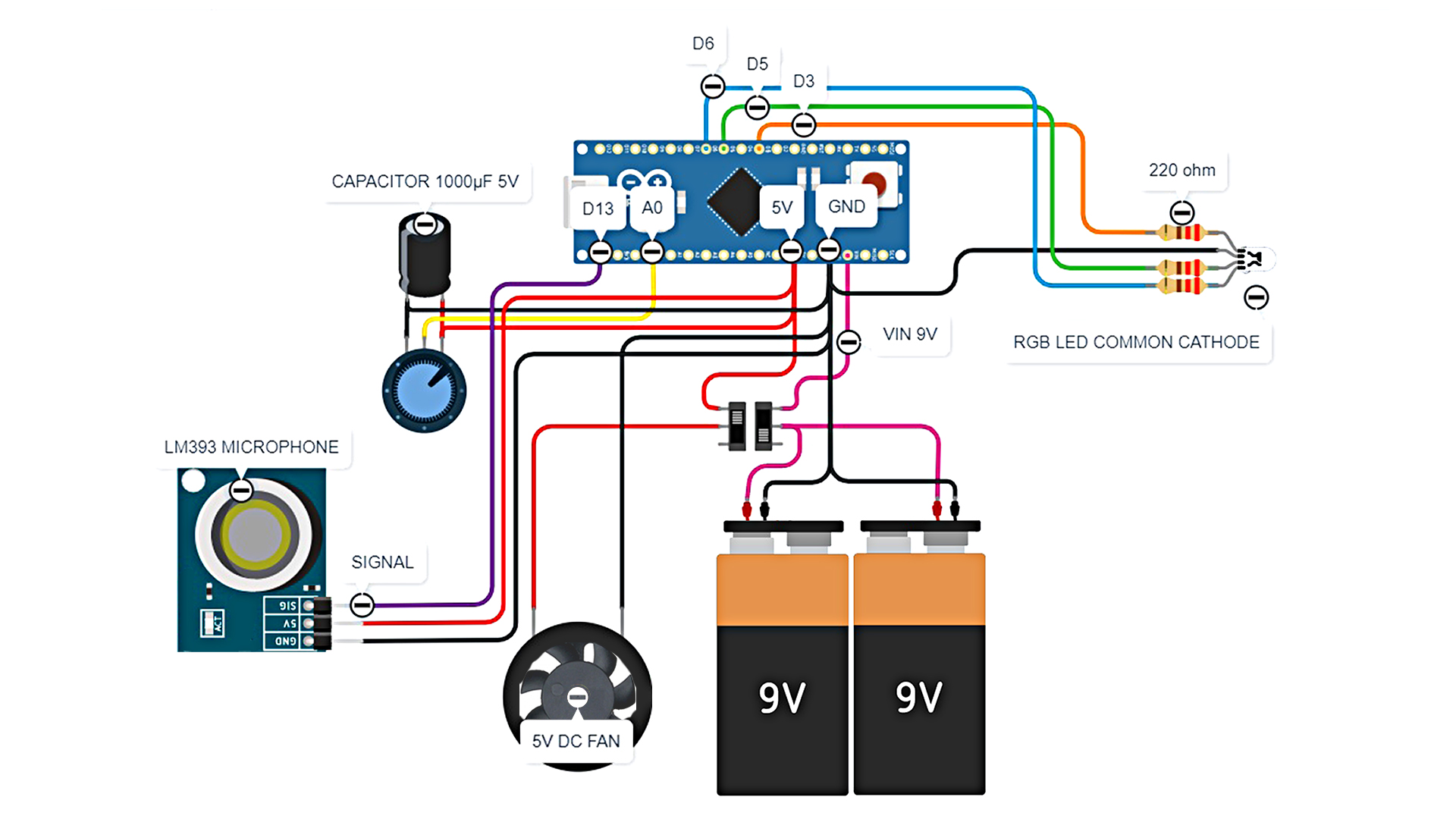// Tali helmet - voice detection LED control by bzqp (2021) https://www.youtube.com/user/Beezqp
//https://www.thingiverse.com/bzqp/designs
//
//A0 - potentiometer
//D13 - microphone
//D3 - red
//D5 - green
//D6 - blue
int brightness = 0;
int brightnesscache=0;
int loudness = 0;
const unsigned long timeout=100; // voice sampling time in ms
unsigned long timestamp=0; // first sample timestamp
void setup() {
pinMode(13, INPUT); //D13 - microphone
pinMode(A0, INPUT); //A0 - potentiometer
pinMode(3, OUTPUT); //D3 - red
pinMode(5, OUTPUT); //D5 - green
pinMode(6, OUTPUT); //D6 - blue
Serial.begin(9600); // Serial for debugging, not really needed normally
}
void loop() {
brightness = floor(analogRead(A0)/4);
loudness = digitalRead(13);
Serial.println(brightness);
if(brightness<8){
// if brightness below 5 turn off the lights to prevent unbalanced RGB color flickering
analogWrite(3, 0);
analogWrite(5, 0);
analogWrite(6, 0);
delay(1);
}
else{
unsigned int dl=(floor(float((float(1)/(float(brightness)+2))*float(100000)))); //delay in microseconds, the same total delay for every brightness setting
//Serial.println(brightness);
if(loudness==LOW){
// if a sound is detected by a microphone, mark a timestamp
timestamp=millis();
}
if(millis()-timestamp<timeout){
// if within the timeout period, gradually lower the brightness to zero
while(brightnesscache>0){
brightnesscache--;
analogWrite(3, brightnesscache/2);
analogWrite(5, brightnesscache/3);
analogWrite(6, brightnesscache);
delayMicroseconds(dl);
}
}
else{
// if no sound is detected, gradually rise the brightness to the value determined by the potentiometer
while(brightnesscache<brightness){
brightnesscache++;
analogWrite(3, brightnesscache/2);
analogWrite(5, brightnesscache/3);
analogWrite(6, brightnesscache);
delayMicroseconds(dl);
}
// just to be sure it goes all the way up to brightness
analogWrite(3, brightness/2);
analogWrite(5, brightness/3);
analogWrite(6, brightness);
}
}
}



















Comments